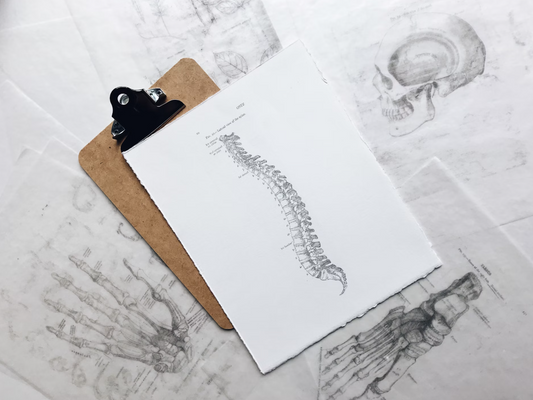Every breath you take has a profound effect on your body. Your lungs, the vital organs responsible for oxygenating your blood and expelling carbon dioxide, work tirelessly day and night, even when you’re not paying attention. But have you ever stopped to think about what happens during your breathing cycle? Understanding how your lungs function throughout the day can not only help you appreciate their incredible work but also inspire you to take better care of your respiratory health.
In this article, we’ll take you through a day in the life of your lungs and break down the various stages of your breathing cycle.
What is a Breathing Cycle?
A breathing cycle consists of two main phases: inhalation (breathing in) and exhalation (breathing out). These two processes happen repeatedly and are controlled by the diaphragm, the primary muscle responsible for breathing. When you inhale, air fills the lungs, bringing in oxygen, which is then transferred to your blood. On the exhale, your body expels carbon dioxide, a waste product of metabolism.
Breathing cycles occur automatically and continuously, typically at a rate of 12 to 16 breaths per minute in adults at rest. However, these cycles can change throughout the day depending on your activity level, emotions, and environmental factors.
The Morning: A Fresh Start
As you wake up, your body shifts from a restful state to a more active one. Your lungs, which have been at rest during the night, are now waking up too. You may notice that your first few breaths of the day feel deeper and more deliberate. That’s because, during sleep, your body enters a state of lower breathing rates, and your lung tissue rests to help regenerate.
- Inhalation: As you take your first breath, your diaphragm moves downward, and air fills the lower lobes of your lungs, helping to reoxygenate your blood. This initial deep breath helps "stretch" the lungs after hours of being in a relaxed state.
- Exhalation: As you exhale, your lungs expel any residual carbon dioxide that has accumulated in your body while at rest.
Midday: Sustaining Energy and Focus
By the time midday rolls around, your breathing patterns may be influenced by your activity level, stress, or emotional state. If you’ve had a busy morning, your breathing rate may increase as your body demands more oxygen to fuel your muscles and brain. Additionally, your diaphragm and intercostal muscles (muscles between your ribs) are more actively engaged.
- Inhalation: With physical or mental activity, your breath becomes faster and shallower to deliver more oxygen to your body. Your body is in "fight or flight" mode, and you breathe faster to keep up with the increased demand for energy.
- Exhalation: In this phase, you expel more carbon dioxide. If you’re stressed or anxious, your breathing may be shallow, which can leave you feeling tense. This shallow breathing may not expel all of the carbon dioxide from your lungs, leading to feelings of lightheadedness or fatigue.
During this time, it's important to practice conscious breathing to avoid hyperventilation (over-breathing), which can lead to dizziness and anxiety.
Afternoon: Relaxation and Recovery
As the day progresses and your energy levels begin to dip, you might find yourself feeling a bit sluggish or fatigued. This is the perfect time to check in with your breathing. Conscious breathing exercises can help reduce stress and prevent your body from staying in a heightened state.
- Inhalation: When you consciously slow down your breathing, you allow your lungs to fill deeply with air, providing a fresh influx of oxygen. Diaphragmatic breathing, also known as "belly breathing," can activate the parasympathetic nervous system, encouraging relaxation.
- Exhalation: When you exhale slowly, you activate your body’s relaxation response, helping to lower your heart rate and blood pressure. This also clears the body of carbon dioxide, promoting a sense of calm.
Taking a few minutes to practice deep, mindful breathing during the afternoon can help reset your energy and focus levels for the rest of the day.
Evening: Unwinding and Preparing for Rest
As the evening approaches and you wind down for the day, your body begins to prepare for rest. Your breathing slows down as your metabolism decreases, and your body shifts from an active state to one of rest and repair. At this point, your lungs are still working to expel waste products from the body, but the focus shifts to conserving energy for the night.
- Inhalation: Your inhalations become slower and deeper as your body enters a restful state. If you practice slow breathing, you can help signal your body to prepare for sleep. Deep breathing fills your lungs more completely, allowing you to take in more oxygen before resting.
- Exhalation: Exhalations become longer and more relaxed. Your body may release tension as you exhale, helping to reduce any lingering stress from the day.
Incorporating relaxation techniques, such as deep breathing or progressive muscle relaxation, before bed can help prepare your lungs and body for restorative sleep.
Night: Silent Breaths in Rest
While you sleep, your lungs continue to work, but at a much slower pace. During the night, breathing becomes more shallow and slower as the body rests. This is part of the body’s recovery process, allowing the respiratory system to heal and regenerate. Your body naturally enters a state of reduced breathing rate, which helps conserve energy for essential processes like cell repair and detoxification.
- Inhalation and Exhalation: Your diaphragm continues to move, albeit at a slower rate, delivering oxygen to your body and expelling waste products like carbon dioxide. Despite the slower pace, your lungs are still active, ensuring that your body maintains the balance of oxygen and carbon dioxide levels in the bloodstream.
How to Optimize Your Breathing Cycles
- Practice deep breathing exercises: Engaging in diaphragmatic breathing or other relaxation techniques can help regulate your breathing, reduce stress, and ensure more effective lung function throughout the day.
- Take breaks: If you’re working on a computer or sitting for long periods, take short breaks to focus on deep breathing. This allows your body to reset, reducing the effects of shallow, stress-driven breathing.
- Stay mindful of posture: Good posture supports optimal lung expansion. Avoid slouching, which can limit lung capacity and lead to shallow breathing.
- Engage in physical activity: Regular exercise, especially aerobic activities like walking, running, or swimming, promotes healthy lung function and increases your lung capacity over time.
Final Thoughts
Your lungs are working for you all day, silently supporting your every breath and providing your body with the oxygen it needs to function. By understanding the various stages of your breathing cycle and practicing conscious breathing techniques, you can improve your respiratory health and energy levels throughout the day. Whether you're starting your morning with a deep breath or winding down for bed, taking time to be mindful of your breathing can help you feel more energized, focused, and relaxed.




